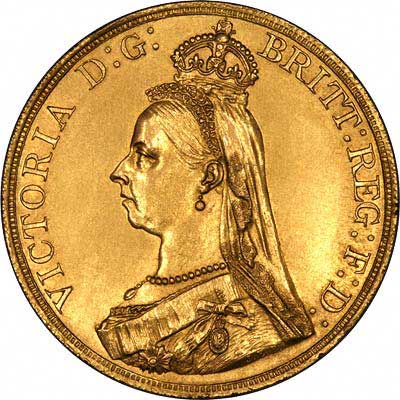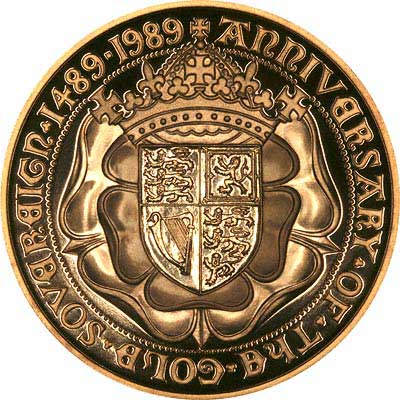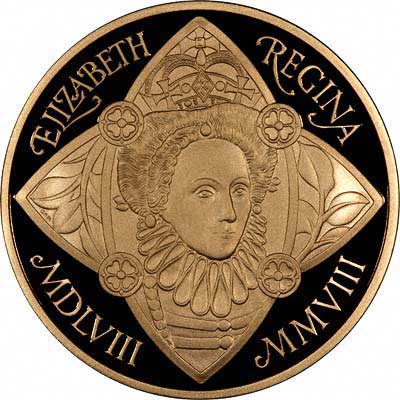| The Very Highest Quality Gold Coins... |
| The Story of the Five Pound Piece |
|

|
|
|

|
|
|

|
|
|

|
|
|

|
|
|
Britain's Biggest Gold Coin
The five pound gold coin is Britain's largest and most impressive gold coin, although five guineas were slightly larger, they were discontinued after 1777.
The designs of five pound pieces generally follow that of the sovereign, so that the reverse usually features Benedetto Pistrucci's magnificent depiction of Saint George slaying the dragon.
The gold five pounds, a five sovereign coin, was first struck in 1820 for George III, although it was not issued for circulation, being only a proof pattern coin. The modern sovereign had been re-introduced in 1817.
A further proof-only version was produced in 1826 for George IV as part of the Coronation proof set, but again this was not intended for circulation.
No five pound coins were issued for William IV, and the next date produced was 1839 for Victoria. This also was a proof-only version, not intended for circulation.
All of the above coins are rare and expensive.
Queen Victoria
In 1887, a larger quantity of five pound coins was produced on the occasion of Queen Victoria's Golden Jubilee. They were produced in proof editions, and for the first time, a normal circulation type version. Similarly in 1893, two versions of the five pound piece were produced to mark the change to the "Old Head" coin issues.
In 1902 there was a coronation issue of coins which included another five pound coin, again in two versions.
Only small numbers of five pound coins turn up which show much sign of having been used in circulation. These are all from the three issues of 1887, 1893, and 1902. It is evident from this that the five pound gold piece was never really much used, and certainly not in everyday transactions. Future issues were never used for circulation.
George V to Elizabeth II
George V's coronation in 1911 was marked by the issue of proof coins sets, some of which included a gold five pounds.
Although pattern coinage was prepared for Edward VIII, no British coins were issued bearing his portrait, even for collectors.
For the coronation of George VI, proof coin sets were issued in 1937 including a five pounds.
For the coronation of Elizabeth II in 1953, proof sets were issued, but contained denominations from the crown down to farthing. Gold coin specimens were produced, but none were issued, even for collectors.
Recent Times
In advance of decimalisation in 1971, a department was created at the Royal Mint to produce, package and market coins for collectors, and in 1980, five pound gold coins were once again issued, and this production has continued in most years since. In many years both proof and ordinary versions have been produced, while in other years only one version has been made.
Crowns Cause Confusion
In the days when gold coins regularly changed hands in circulation, many people must have gold-plated crowns, which were silver coins with a face value of five shillings (25 pence), to try to pass them off fraudulently as five pound coins. As neither coin had its value in its inscription, this must have been quite tempting. We do not know how successful the attempted deception would have been. As five pound coins would only have been encountered infrequently, it appears to us unlikely that the deception would have worked.
Crowns Cause More Confusion
The story of the gold five pound piece would not be complete without a mention of the "promotion" of the crown from a five shilling or twenty five new (decimal) pence value to a five pounds face value.
Henry VIII issued the first British crown in 1544 as a gold coin with a value of five shillings. In 1551 under Edward VI, the crown was issued as a silver coin, again with a value of five shillings. Crowns continued to be issued, with some interruptions, until 1981. Throughout all this time, its value remained unchanged at five shillings, although after 1971, this became the decimal equivalent of twenty five new pence.
With the issue of a crown to commemorate the Queen Mother's ninetieth birthday in 1990, the value of the new issue of crowns was changed to five pounds, presumably reflecting inflation. In that year, although the newly promoted crown was designated as a cupro-nickel coin, there were special silver and gold editions struck for sale to collectors. It could be considered then, that two traditions have been revived, not only has the crown been struck in gold for the first time since Edward VI in about 1553, but also five pound coins were struck in gold, reflecting their relatively recent heritage from 1820.
Quintuple Sovereigns
Since the introduction of the gold proof commemorative five pound crowns, it is no longer immediately obvious what one is referring to as a "gold £5", so it may mean that we have will need to call the original sovereign type of £5 coin a "quintuple sovereign" to distinguish it from a gold version of a £5 crown.
Pistrucci's St. George and Dragon
The most frequently used and recognisable reverse design on quintuple sovereigns has been St. George and the dragon, originally engraved by Benedetto Pistrucci for the great recoinage of George III. On five pounds it was first used in 1820, then in 1887, 1902, 1911, 1937, and from 1980 onwards, apart from a few years. It is still in use today on five pound gold coins.
Gold five pounds are a worthwhile addition to any collection of British coins.
Year 2000 Bullion Issue
As at 9th. October, 2000, it has recently been announced that an uncirculated bullion gold £5 coin will be issued. For updates on this news, prices and availability, we suggest you visit our specialised gold coin site https://taxfreegold.co.uk/2000fivepounds.html.
Official issue price is £325 each, which compares very favourably with the price of the "Brilliant Uncirculated" version released earlier at a price of £575 in an edition of 1,000 pieces. These were housed in a leather box with a certificate.
More About £5 Gold Coins
For more information about £5 gold pieces, it's best to visit the Gold £5 Information page on our other specialist Tax Free Gold website.
If you want to find the value of a coin you own, please take a look at our page I've Found An Old Coin, What's It Worth?
If you have an enquiry about any of our Gold £5 Pieces, we'd be happy to answer you, but please note it may be quicker to telephone us. Please see the Contact Us page of our website.
| ...at the Lowest Possible Price |
|
32 - 36 Harrowside, Blackpool, Lancashire, FY4 1RJ, England. Telephone (44) - (0) 1253 - 343081 ; Fax 408058; E-mail: The URL for our main page is: https://24carat.co.uk | Chard(1964) Ltd |